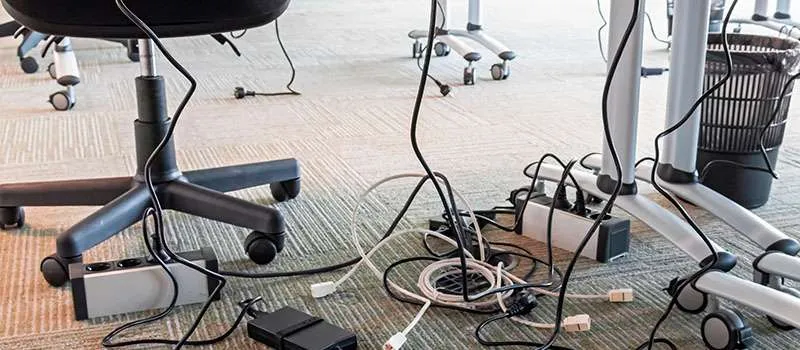

We are living in a day and age where cables, wires, and fiber optics are visible everywhere. Cabling is an essential component in any office or business space, and must be reliable, resilient, and serviceable.
One of the most important things in any office is the placement and organization of cables. It can be a chore to try and fit cables and wires around cubicles, desks, and all that open office space. Your business should look neat and tidy, without any tripping hazards.
To avoid space constraints and safety hazards, it is important that you invest in a sound structured cabling system.
What is structured cabling?
Structured cabling is a system for organizing and managing computer cables within buildings. It refers to a set of standards, practices, and techniques for designing and installing on-premises wiring. These standards include specifications for cable types, installation practices, and testing procedures.
The system is designed to make it easier to install and maintain the cabling safely, and ensure each wire can be traced and identified. This way, you are provided with a platform for future growth by making sure there are no hindrances to future technology installations.
The right structured cabling management will maximize your office space and double down on office safety, as well as support the use of faster, more reliable, and cost-effective advanced data-transfer technologies.
Why is structured cabling important?
The importance of a structured cabling system is that it helps provide a more efficient and reliable network. It ensures that there is proper grounding or shielding so as to keep the electromagnetic interference to a minimum. It can also provide physical prevention, protecting data and devices against power surges and other forces.
Proper structured cabling requires a detailed design and installation process to ensure that the wires and fiber optic cables are properly routed, and provides the foundation for both the physical and visual aspects of a building.
Unlike the typical point-to-point cabling system, the structured cabling system can avoid what amounts to a jumble of wires, and delivers data at higher speeds. It also helps to ensure installations are done in the right way, and that they can perform better over time.
Subsystems of structured cabling
Every structured cabling installation is unique. Structural differences in a building, such as its size or shape, affect the way it handles cable and connection products. Additionally, different types of equipment make different needs for cabling installation.
While every building presents unique challenges, six subsystems will make up your structured cabling system. Together, they provide a convenient and well-implemented framework for increasing your business efficiency and making future technological installations easier.
- Entrance facilities: the point at which the wiring of the premise and the outside services facilities meet.
- Equipment rooms: rooms inside the building or campus that house equipment, server space, or internet access points.
- Backbone cabling: a set of cables which stretches from one end of a building to another, and is used to distribute signals throughout the entire building.
- Horizontal cabling: a set of cables running from one floor in a building to another for connection with computers and other devices on that floor.
- Telecommunications room: connects the backbone and horizontal wiring.
- Work area components: connections between the end-user’s devices and horizontal cabling system outlets.
How can a structured cabling system help my business?
A good structured cabling system will work well with your business layout, resources, and budget. If those needs are not met, you will run into problems, such as the lack of a secure connection between devices, or the inability to charge multiple devices from one charger port.
Businesses must take a structured approach when designing their network. The more care given to the design before it is implemented, the less likely connectivity issues and other problems will occur in the future.
A well-designed and installed structured cabling system will also provide you with an easy connection point for technological advancements, like data centres and fiber optic networks.
Some business benefits of a structured cabling system:
- Improve workplace safety
- Enhance productivity
- Predictable performance delivery
- Greater data protection
- Quicker deployments
- Maximize system availability
- Flexibility to accommodate moves
- Future-proof cable system usability
Last but not least, don’t underestimate the aesthetic of a structured cabling system; it looks much neater and more professional than a point-to-point system.


